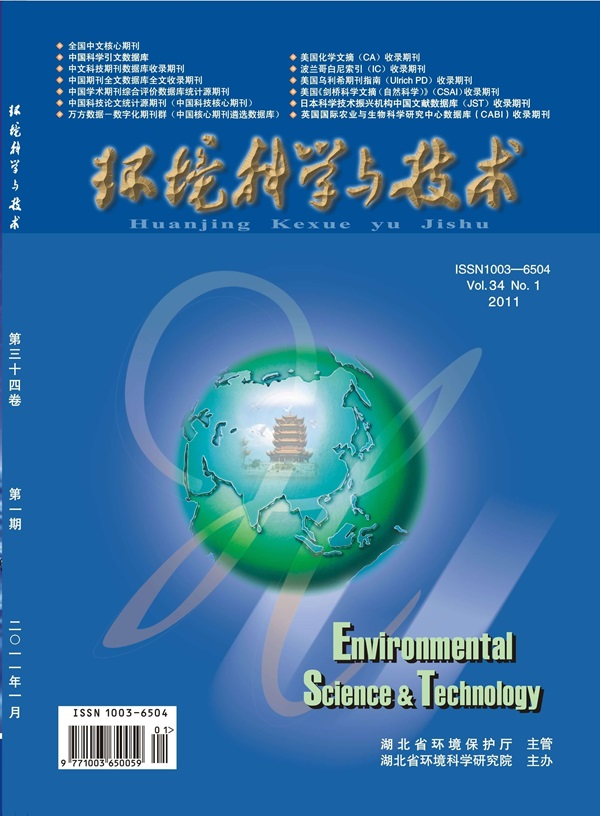The Pivotal Role of Carbon-Centered Environmentally Persistent Free Radicals in HONO Formation via Heterogeneous Reaction of NO2 on Diesel Soot.
IF 10.8
1区 环境科学与生态学
Q1 ENGINEERING, ENVIRONMENTAL
引用次数: 0
Abstract
Nitrous acid (HONO) constitutes an essential gaseous pollutant and a significant reservoir of hydroxyl radicals (•OH), which are crucial for atmospheric oxidation capacity. Environmentally persistent free radicals (EPFRs), long-lived in particulate matter, may promote HONO formation via reactions with NO2, although the mechanisms remain incompletely elucidated. In this study, the heterogeneous formation of HONO was explored through reactions between NO2 and diesel soot collected during a field campaign, focusing on the role of EPFRs. EPFRs in diesel soot, primarily composed of carbon-centered radicals (CCRs) within the elemental carbon (EC), were present at 5.40 × 1018 ± 9.60 × 1018 spins·m-3. The combination of CCRs in EC with NO2 to form surface nitro compounds (RONO) was initially observed and served as the rate-limiting step. Furthermore, the photolysis of carboxyl compounds (ROOH) in organic carbon (OC) generated •OH, which reacted with RONO to enhance HONO formation. Gradient RH experiments revealed that H2O facilitates HONO formation by enhancing NO2 adsorption or acting as an •OH donor. The results indicate that, in typical urban environments, besides HCHO photolysis, EPFRs in diesel soot significantly contribute to HONO formation, playing a major role in •OH production with a rate of ∼106 molecules·cm-3·s-1 at RH 40-60% under vehicle-related EPFR concentrations (∼1013 spins·m-3, observed in Xi'an, China). This study highlights a novel HONO formation mechanism based on the synergistic effects of OC and EC in soot and underscores the critical role of EPFR-mediated heterogeneous HONO formation in the atmospheric oxidative capacity.以碳为中心的环境持久性自由基在柴油烟尘上NO2非均相反应形成HONO中的关键作用。
亚硝酸(HONO)是一种重要的气体污染物,也是对大气氧化能力至关重要的羟基自由基(•OH)的重要储存库。长期存在于颗粒物中的环境持久性自由基(EPFRs)可能通过与NO2的反应促进HONO的形成,尽管其机制尚未完全阐明。在本研究中,通过在野外活动中收集的NO2与柴油烟尘之间的反应,探讨了HONO的非均相形成,重点研究了epfr的作用。在5.40 × 1018±9.60 × 1018自旋·m-3的范围内,柴油烟尘中的epfr主要由单质碳(EC)内的碳中心自由基(CCRs)组成。ccr在EC中与NO2结合形成表面硝基化合物(RONO),这是最初观察到的,并作为限速步骤。此外,羧基化合物(ROOH)在有机碳(OC)中的光解反应生成•OH,与RONO反应促进HONO的形成。梯度RH实验表明,H2O通过促进NO2吸附或作为•OH供体促进HONO的形成。结果表明,在典型的城市环境中,除了HCHO光解作用外,柴油煤烟中的EPFR还显著促进HONO的形成,在车辆相关EPFR浓度(中国西安观测到的~ 1013个自旋·m-3)下,在RH 40-60%的条件下,EPFR对•OH的生成起主要作用,其速率为~ 106分子·cm-3·s-1。本研究强调了一种基于烟灰中OC和EC协同作用的新型HONO形成机制,并强调了epfr介导的非均相HONO形成在大气氧化能力中的关键作用。
本文章由计算机程序翻译,如有差异,请以英文原文为准。
求助全文
约1分钟内获得全文
求助全文
来源期刊

环境科学与技术
环境科学-工程:环境
CiteScore
17.50
自引率
9.60%
发文量
12359
审稿时长
2.8 months
期刊介绍:
Environmental Science & Technology (ES&T) is a co-sponsored academic and technical magazine by the Hubei Provincial Environmental Protection Bureau and the Hubei Provincial Academy of Environmental Sciences.
Environmental Science & Technology (ES&T) holds the status of Chinese core journals, scientific papers source journals of China, Chinese Science Citation Database source journals, and Chinese Academic Journal Comprehensive Evaluation Database source journals. This publication focuses on the academic field of environmental protection, featuring articles related to environmental protection and technical advancements.
 求助内容:
求助内容: 应助结果提醒方式:
应助结果提醒方式:


